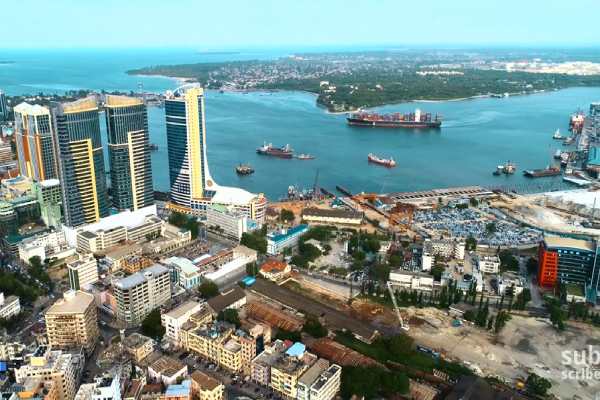Top 20 Coffee Producing Countries In The World (Updated)
What are the highest coffee producing countries in the world? Coffee is mostly grown in some specific areas of the world and such area is known as the coffee belt and has that name because it is like a belt that surrounds the equator. The coffee belt covers Africa, Asia, Latin America and the Caribbean, making coffee a world crop. Coffee-producing countries count on the hard work of coffee growers, their perseverance in the face of challenges, and their attention to detail in the harvest.
Producers depend on the infrastructure, support, and education they receive from government agencies, cooperatives, and non-profit organizations.
All this work allows us to continue enjoying our daily cup of beverage.

Next, we talk about the top 10 coffee producing countries in the world, i.e. the countries with the highest coffee production this year:
Coffee Producing Countries In The World
Below is the top 10 coffee producing countries in the world:
1. Brazil
Brazil is considered the largest coffee producer, with an annual production of 3,009 tons. In the 18th century, Brazil began growing coffee in the north. Now around 300,000 coffee growers in Brazil produce around 40% of the world’s coffee.
The Brazilian Coffee Institute (IBC) regulates and coordinates the industry in Brazil. Almost 1.8 million hectares are planted with coffee crops in Brazil. The Arabica variety represents 70% of the coffee beans. 3% of export earnings come from coffee.
Coffee is grown in Brazil in the areas of Minas Gerais, Bahia, Rondônia and Espírito Santo, the effort made in this country makes it one of the coffee producing countries in the world and ranking No1.
2. Vietnam
Vietnam is ranked 2nd on the list of coffee producing countries in the world, with 1,683 tons.
Coffee arrived in Vietnam in the 19th century, although at that time it was not grown for export. It was in the early 1990s that Vietnam turned to coffee growing to improve the economy.
The sector grew at huge prices and now represents almost 3 million people, mostly farmers on small farms.
Most of the coffee production is the Robusta variety, less than 5% of the coffee beans are Arabica.
3. Colombia
Colombia has a long history around coffee. Unique traditions and lifestyles have emerged in the industry. Coffee was introduced to Colombia at the beginning of the 18th century and at the end of the 19th century, it was the dominant crop.
In Colombia, about 2.3 million lands is planted with coffee. In 1960, it represented almost 90% of Colombia’s exports. There are around 555,000 coffee growers in Colombia, coffee farms are generally not owned by large corporations, they are usually family-owned.
4. Indonesia
Indonesia has a long history of coffee dating back to the 17th century. They settled in Java, making Indonesia one of the first countries outside of Arabia and Africa to cultivate the crop and promote Arabica production.
At the end of the 19th century, the dreaded coffee rust wiped out much of the high-quality coffee plants. To prevent this tragedy from happening again, Indonesia replanted with disease-resistant Robusta coffee. Now Arabica coffee accounts for about 25% of the coffee beans that are grown.
5. Ethiopia
Ethiopia is believed to be the original home of Arabica coffee, you may know the Legend of Kaldi.
Today, 12 million people in Ethiopia live off the coffee sector. Coffee accounts for 28% of exports and is grown in Ethiopia, in the south-west, west and east of the country.
Ethiopia has a coffee culture that is rich in tradition, such as the coffee ceremony.
6. Honduras
It is the largest coffee-producing country in Central America, 50 years ago, there was hardly any coffee in the country.
Between 1970 and 1996, national production increased by 200%. The terrain and soil of Honduras are well adapted to produce specialty coffee beans, which account for around 30% of total coffee exports.
The Honduran Coffee Institute helps promote coffee production and assists farmers. This support has helped the industry prosper.
Coffee is the main agricultural export of Honduras. Approximately 100,000 people in Honduras grow coffee today.
Diversity is a hallmark of Honduras. Diverse varieties, processes and microclimates in the six main coffee regions create varied cup profiles.
7. India
In the 17th century, coffee beans were brought from Yemen to India. During the 18th century, the British increased commercial coffee plantations in India.
Now, there are 210,000 coffee growers in India, mainly small growers. They grow both Arabica and Robusta beans, mainly in the southern part of India in Karnataka, Tamil Nadu and Kerala.
Indian coffee is known for being spicy, with hints of cloves or cardamom and for having little acidity.
The government has an Indian Coffee Board that regulates the industry. Coffee in India is mainly intended for export, as the preferred beverage in the country is tea.
8. Uganda
Coffee is Uganda’s main export. Uganda mainly grows Robusta (87%) and Arabica accounts for only 13% of production. In fact, Uganda is the largest exporter of Robusta coffee in Africa, it should come as no surprise as it is originally from this country.
Uganda produces coffee in much of the west, east, and southeast. Robusta harvest season is typically from November to February.
Due to the British influence, tea is the favorite drink in Uganda, so there is not much traditional coffee culture.
9. Peru
Coffee arrived in Peru in the late 18th century, however, the export of the crop took longer. The first recorded exports did not occur until the late 19th century.
Now, there are more than 100,000 coffee growers growing very common varieties in Latin America, such as Bourbon, Typica, Catuai, Caturra and Mundo Novo.
The regions extend from north to south and include San Martín, Junín, Cajamarca, Amazonas, Cusco. Peruvian coffees are prized for their smooth cup profile. In addition, Peru shines in the production of washed organic coffees.
10. Guatemala
In Guatemala, more than 100,000 people are involved in the coffee sector.
The rich volcanic soil and microclimates help create coffee with notes of chocolate or even spices. Anacafé (National Coffee Association) helps with the research and promotion of Guatemalan coffee around the world.
Guatemalan coffee is grown in the southern part of the country, from east to west. Antigua has three volcanoes and rich volcanic soil that are ideal for growing coffee. The high altitudes in the Huehuetenango region give the coffees an acidity and sweetness similar to caramel. Near the border with Honduras, cloudy conditions in Nuevo Oriente produce a balanced and full-bodied brew.
Read Also: The 10 Most Valuable Consumer Brands In The World
Top 20 Coffee Producing Countries In The World
| Rank | Country | Kilograms |
|---|---|---|
| 1. | Brazil | 3.81 billion |
| 2. | Vietnam | 1.74 billion |
| 3. | Colombia | 858 million |
| 4. | Indonesia | 720 million |
| 5. | Ethiopia | 438 million |
| 6. | Honduras | 366 million |
| 7. | India | 342 million |
| 8. | Uganda | 336 million |
| 9. | Peru | 240 million |
| 10. | Guatemala | 228 million |
| 11. | Mexico | 222 million |
| 12. | Nicaragua | 162 million |
| 13. | Côte d’Ivoire | 108 million |
| 14. | Costa Rica | 90 million |
| 15. | Tanzania | 54 million |
| 16. | Kenya | 42 million |
| 17. | Papua New Guinea | 42 million |
| 18. | Laos | 36 million |
| 19. | El Salvador | 36 million |
| 20. | Thailand | 36 million |







